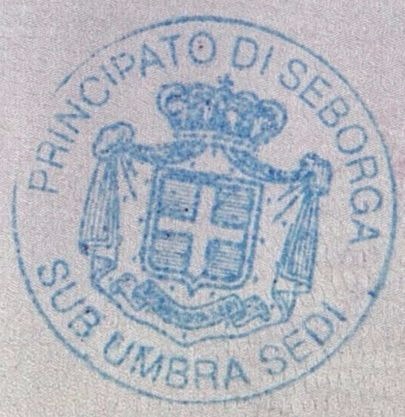The title of this post comes from a writer friend a mine, who used it to describe Liechtenstein as we were visiting on a road trip. It is one of the six “micro-states” of Europe, which are Andorra, Liechtenstein, Luxembourg, Monaco, San Marino, and Vatican City. I like the name, even though none of them is technically a “kingdom”, so I decided to use it for this series on little countries in Europe.
Why write about them? Well, there are several reasons. First of all, not many people visit them, so it’s fun to be able to say you did it! They are unusual in that, when you DO visit them, you wonder how they survived into the modern world, given all the land-grabbing that has been a central feature of European history for millenia. There is also something quite “cute” and quaint about these places that have hung on to their independence and culture despite being surrounded by larger and more powerful neighbors. Some people visit them just to add another country to their “list” (and there’s nothing wrong with that!) And of course for passport stamp collectors like me, these places have some of the coolest passport stamps in the world! What’s not to like?
Today’s stop is not considered an official country, but that doesn’t stop its people from behaving like they are completely independent. Let’s visit the Principality of Seborga!
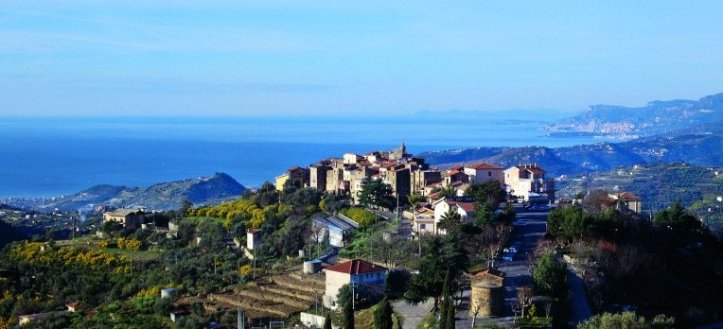
(The Principality of Seborga, with the Riviera and the Mediterranean Sea in the background.)
The Principality of Seborga (Principato di Seborga in Italian, the official language) is a tiny nation that claims 14 square kilometers (5.4 sq mi) in the northwestern Italian province of Imperia in Liguria. It’s close to the French border and about 22 miles (35 kilometers) from Monaco.
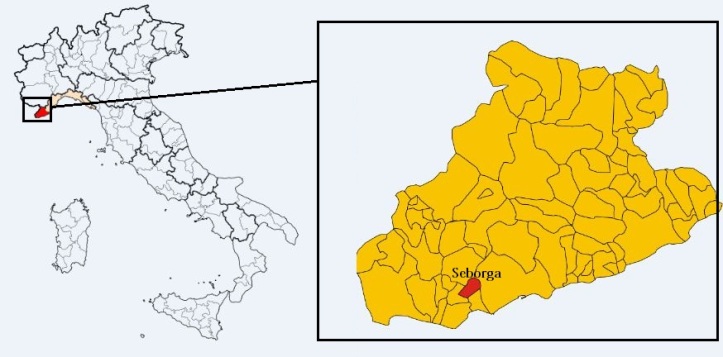
(The map on the right shows Seborga surrounded by the Italian province of Imperia, and the map on the left shows Imperia in red as part of Italy.)
The principality has a population of around 400. It has its own currency (the Luigino) which can be used in the Principality, but generally everyone uses euros. One luigino = $6 US.

(The 2 luigino coin issued to commemorate the proclamation of independence in 1995.)
The Principality has its own all-volunteer army, the Corpo delle Guardie, and maintains its own border stations.

(Some of the members of the Guardie, in their Seborgan blue uniforms, in front of the Church of San Bernardo. And yes, they ARE wearing swords!)
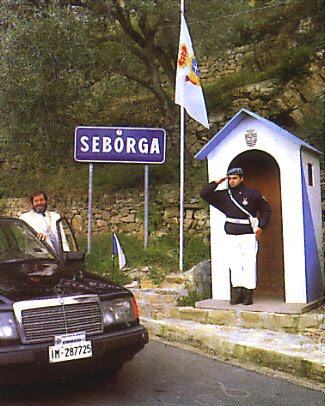
(Prince Giorgio at a border station.)
So how on Earth did this all come about? I think we need a bit of historical background here, which I think you’ll find interesting!
In the early 1960s, a local Seborgan named Giorgio Carbone did a lot of research in the Vatican Archives in Rome. What he discovered was that, during the Middle Ages, the town had been given to the Counts of Ventimiglia as a feudal holding from the Pope. In the year 954, according to his research, Seborga became the property of the Benedictine monastery of Santo Onorato of Lerins, and that in 1079, the Abbot of that monastery was made a Prince of the Holy Roman Empire and created “Prince of Seborga” at the same time.
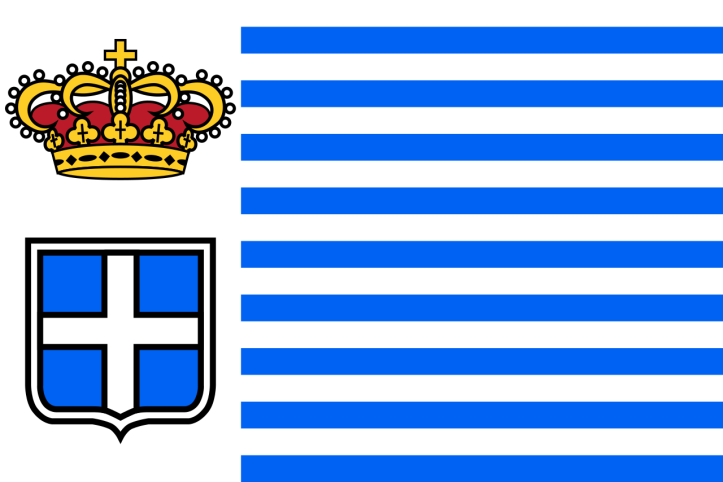
(The flag of the Principality of Seborga.)
Carbone claimed that his research also show that on 20 January 1729, this independent principality was sold to the House of Savoy (the family that eventually unified Italy) and became a protectorate of theirs. In 1815 the Congress of Vienna overlooked Seborga in its redistribution of European territories after the Napoleonic Wars. Seborga was also missed when the Kingdom of Italy was formed in 1861. According to Carbone, Italian unification and the formation of the Italian Republic in 1946 were violations of the sovereignty of Seborga. Essentially, Carbone argued that since the Principality of Seborga, an independent nation before Italian unification, was never consulted about its inclusion in the new country, and since it had never agreed to that inclusion, Seborga was in fact independent and not part of Italy. He also discovered that the 1729 sale had never been registered by the House of Savoy, which meant that the principality had fallen into what is called a “legal twilight zone.”
By 1963 the people of Seborga were convinced of Carbone’s arguments, and so they elected him as their “Head of State.” He then assumed the title His Serene Highness Giorgio I, Prince of Seborga, a title which he held until his death in 2009.

(Prince Giorgio I, in front of the Principality.)
Carbone’s position was confirmed in 1995, when Seborgans voted (304 for, 4 against) for
the Principality’s Constitution and in favor of independence from Italy.

(The coat of arms of the Principality.)
Prince Giorgio’s successor, Marcello Menegatto, was elected on 25 April 2010 and crowned on 22 May 2010, as His Serene Highness Marcello I.
The monarch’s position is not hereditary and elections are held in Seborga every seven years. The most recent election was in April 2017. Prince Marcello was re-elected and took office for another seven years after beating his rival, 129 votes to 42. He was re-crowned in August of 2017.
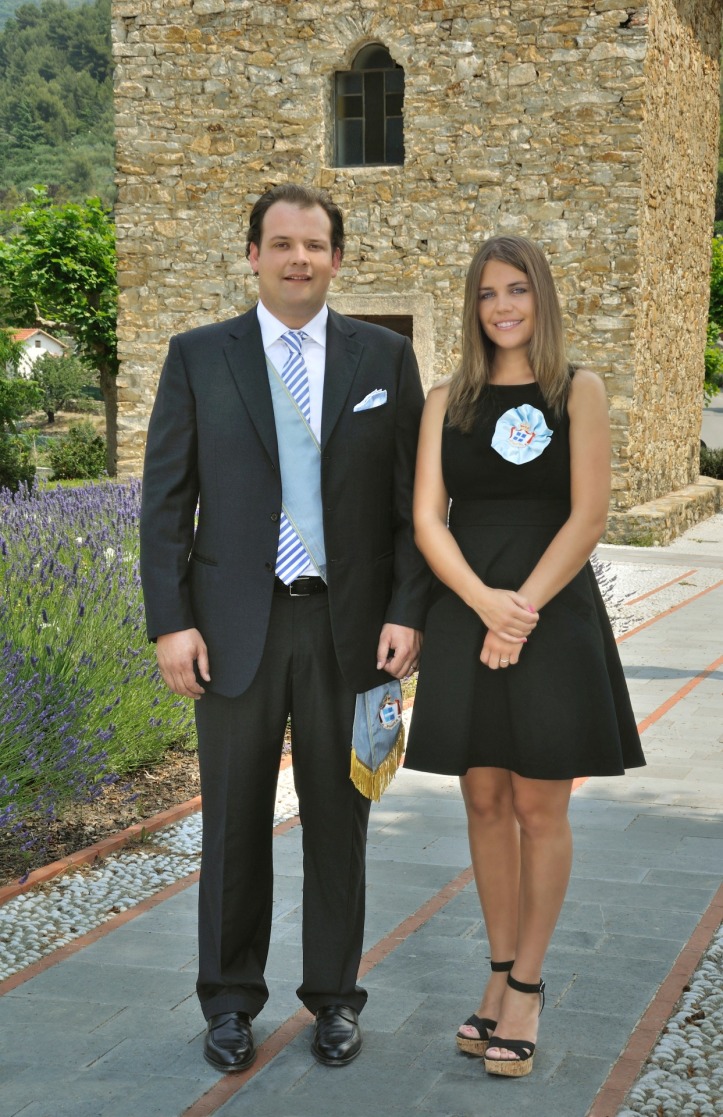
(Prince Marcello I and Princess Nina of Seborga.)
The Constitution of Seborga states that the monarch rules under the advisement of the Crown Council, which has 10 members. Five of those members are elected by the citizens of the Principality, and the Prince names the other five.
I was extremely fortunate while I was there: I happened to stay at a B&B that is owned by one of the members of the Crown Council, and she took us on a personal walking tour of the Principality. We saw a lot of things we’d never have seen on our own, and we got to meet some really cool people! (The B&B is the “SB Bed and Breakfast”: you can book it on all the usual booking sites. I HIGHLY recommend it!)
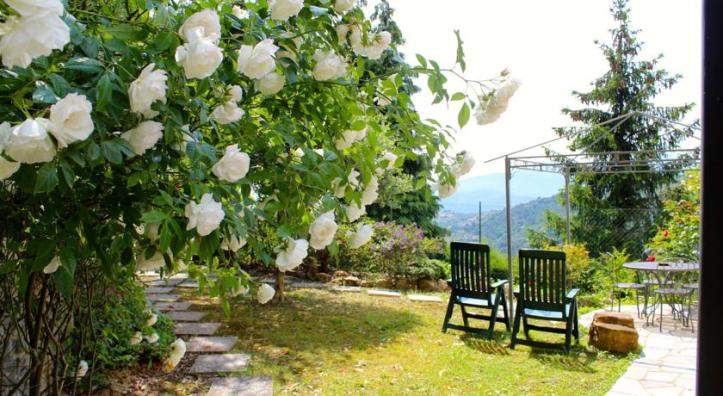
(View of the terrace outside the living room of the villa that you stay in at the SB! Yep, you get the whole place!)
This may sound silly to some of you, but I can assure you: the people of Seborga take their independence VERY seriously! We arrived in Seborga just two days before the coronation, and it was obvious that Seborgans love their country, love their Princely Family, and consider themselves Seborgans, not Italians! Everywhere we went, there were Seborgan flags flying. People have special mailboxes on their houses in the Seborgan colors. When I first heard about this place, I thought it was just a joke, or a way to get tourist money, but it’s definitely not. The Seborgans are fiercely proud of their country and their independence.

(A mailbox on a local house: in Seborgan colors, of course! We saw these everywhere!)

(A sheet of stamps from the Principality.
Seborga is a very old, very beautiful little place. Here are a couple of pictures of the medieval piazza San Martino, dominated by the Church of San Martino. (Seborga has two patron saints: San Martino and San Bernardo.) The Church of San Martino was built in the 15th century.

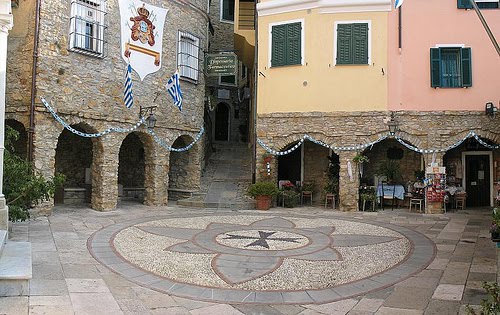
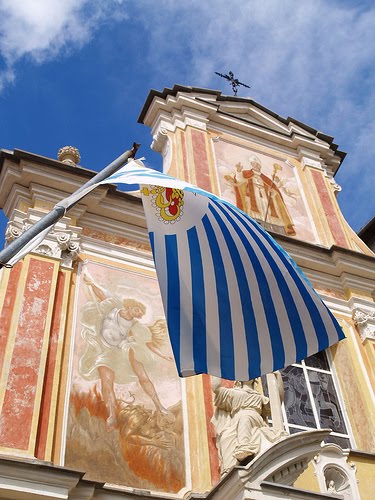
The oldest church in the Principality is San Bernardo, built in the 14th century.
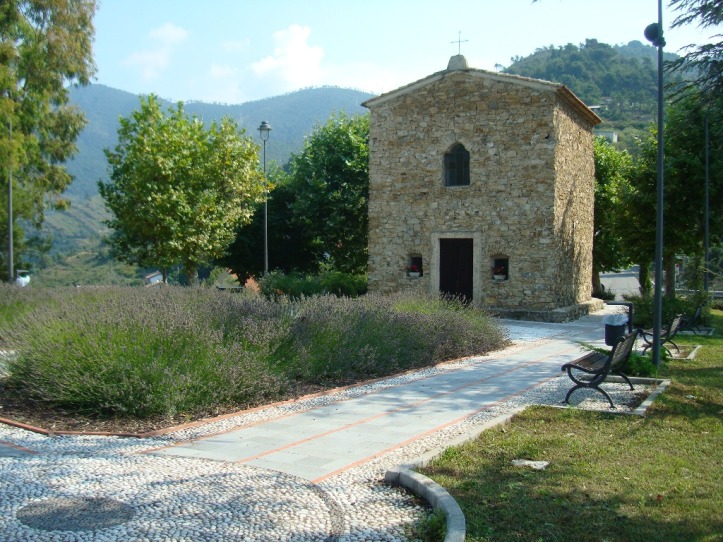
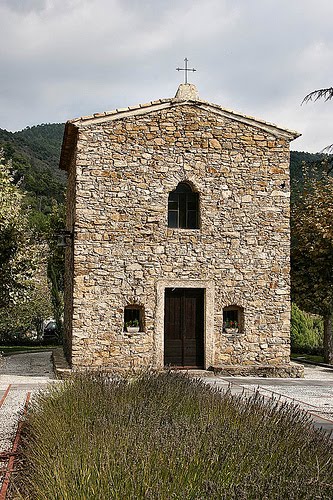
Here are a couple of pretty typical street scenes. When you walk these streets, you can easily think you’ve gone back in time!

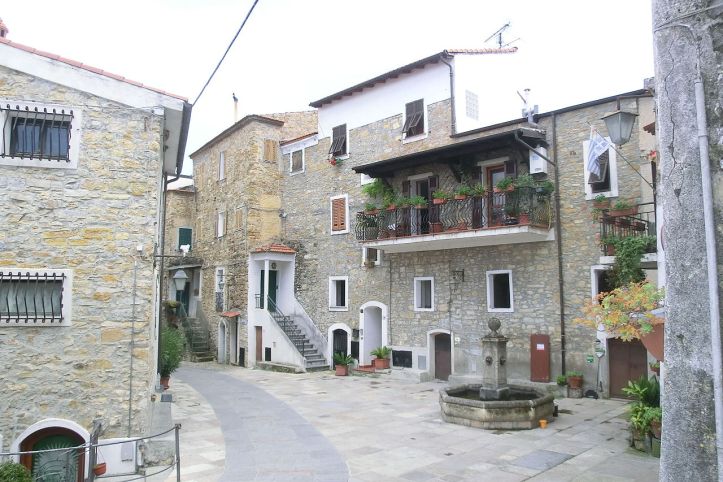
And if you’re REALLY lucky (or just ask around!) you can get the extremely rare Seborga passport stamp! If you’re a passport stamp collector, this is one you definitely want! In fact, when we went to Monaco a few days later, and they were stamping our passports there, even the officials in Monte-Carlo were impressed with the Seborga stamp!
